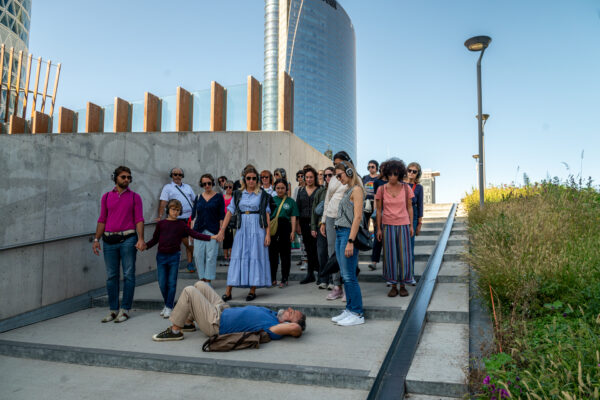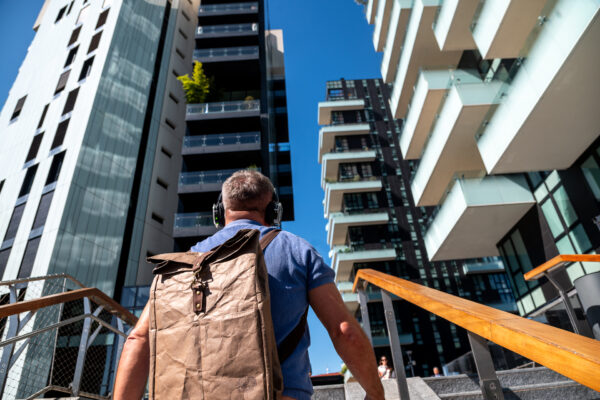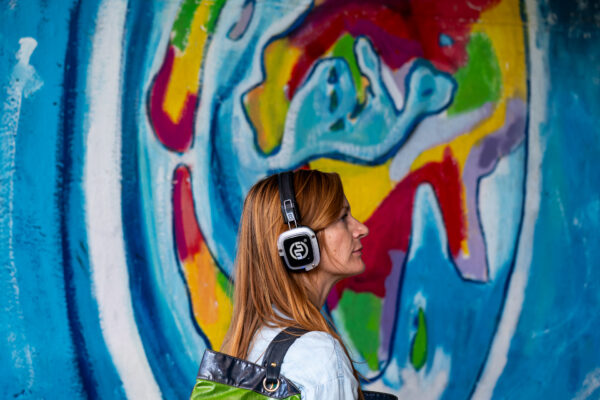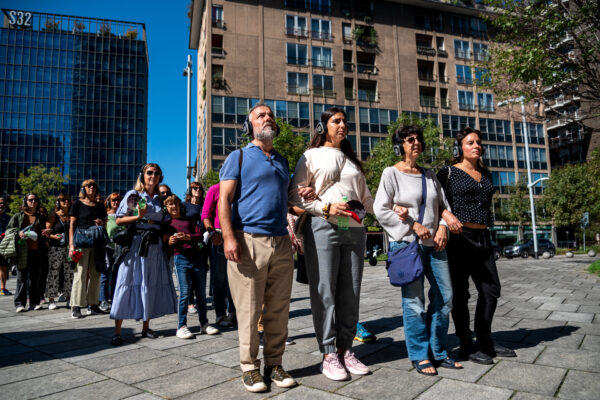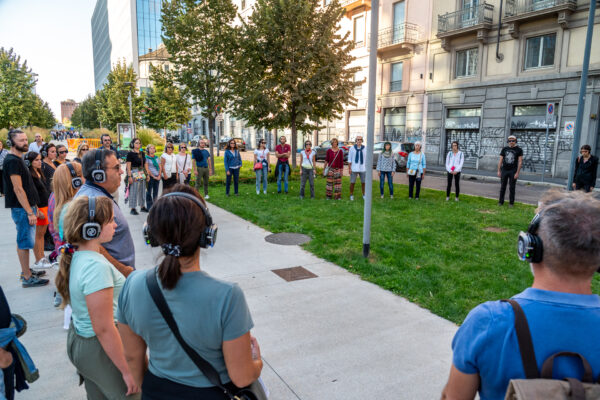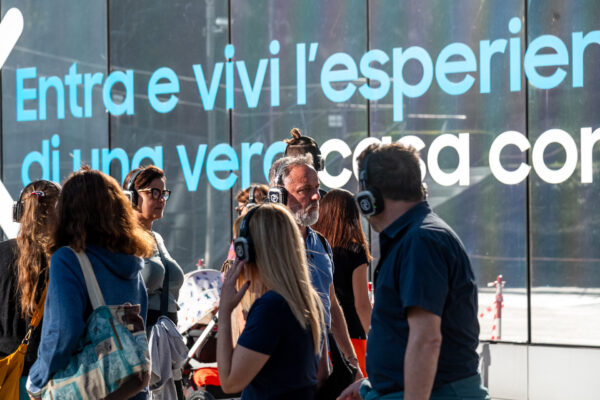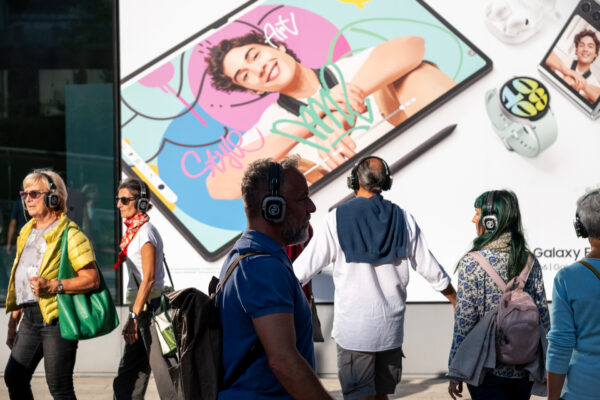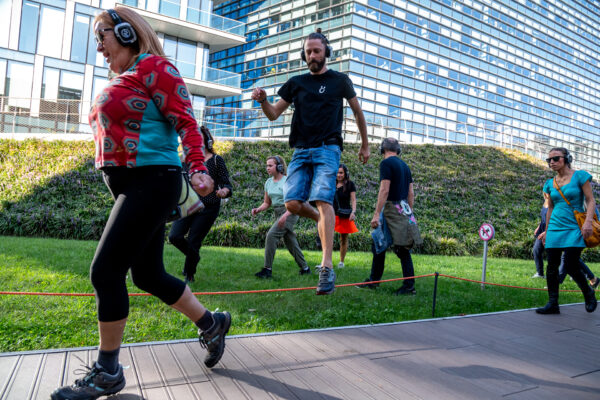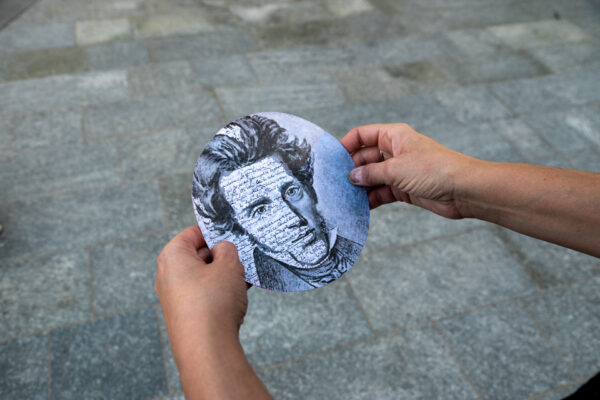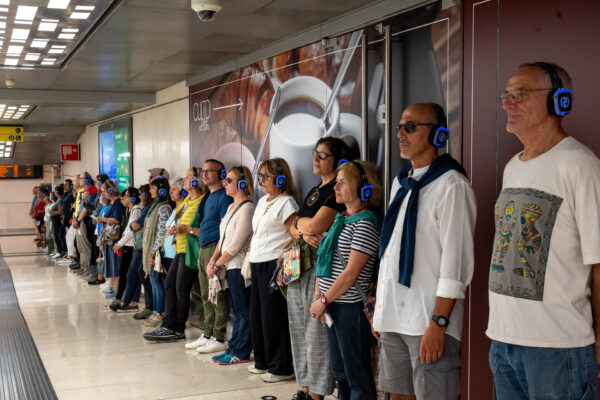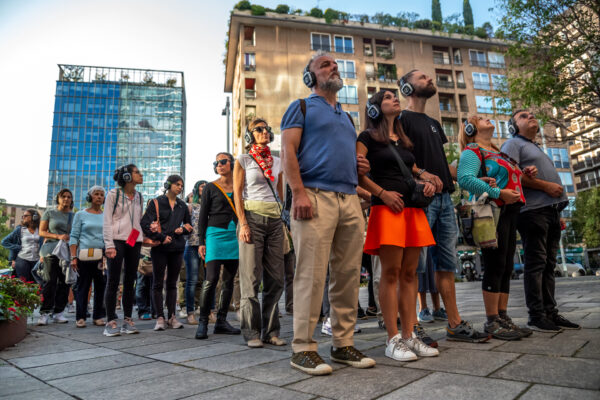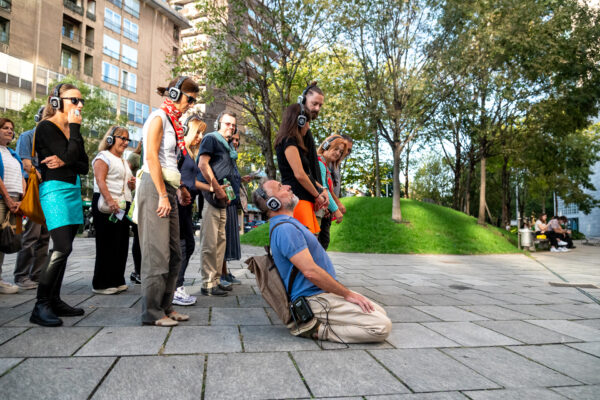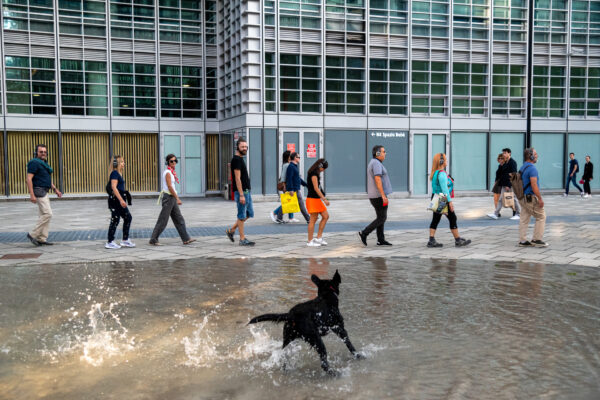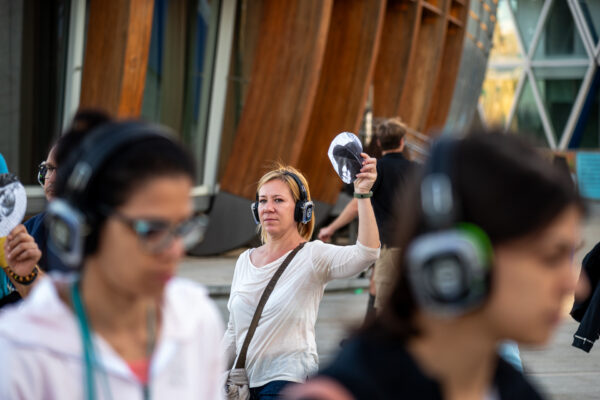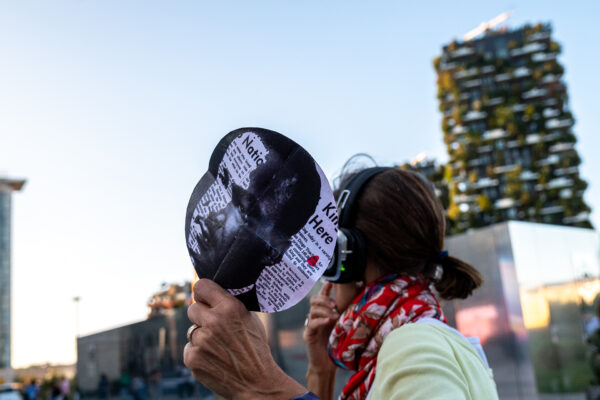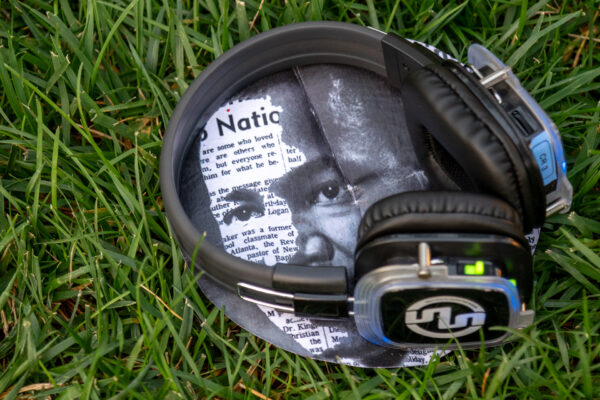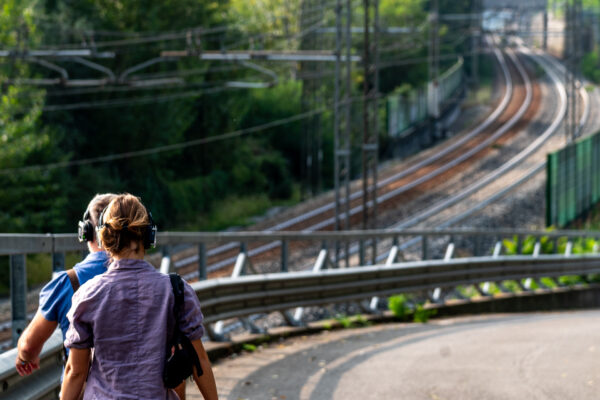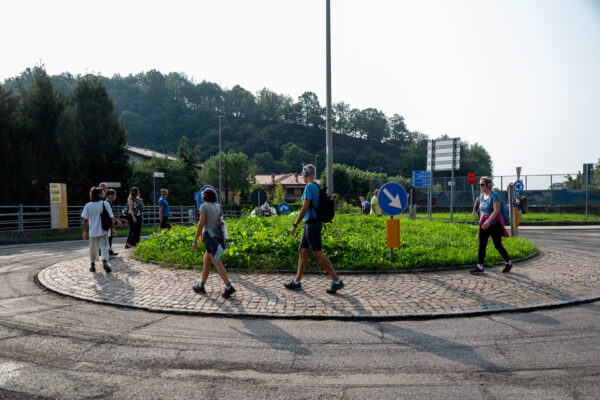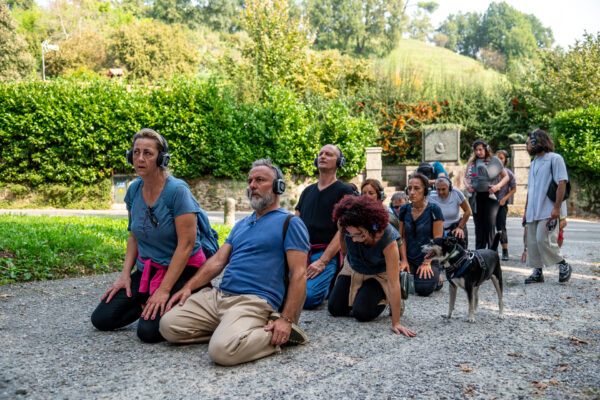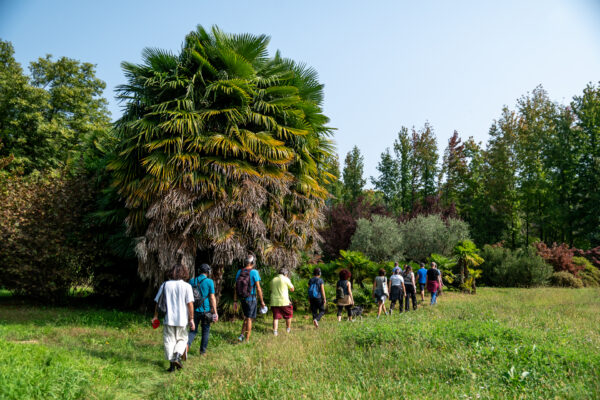site-specific performance
90 minutes
Premiere 2024
“Where does it start? Muscles tense. One leg a pillar, holding the body upright between the earth and sky. The other a pendulum, swinging from behind. Heel touches down. The whole weight of the body rolls forward onto the ball of the foot. The big toe pushes off, and the delicately balanced weight of the body shifts again. The legs reverse position. It starts with a step and then another step and then another that add up like taps on a drum to a rhythm, the rhythm of walking. The most obvious and the most obscure thing in the world, this walking that wanders so readily into religion, philosophy, landscape, urban policy, anatomy, allegory, and heartbreak.” Excerpted from Wanderlust by Rebecca Solnit.
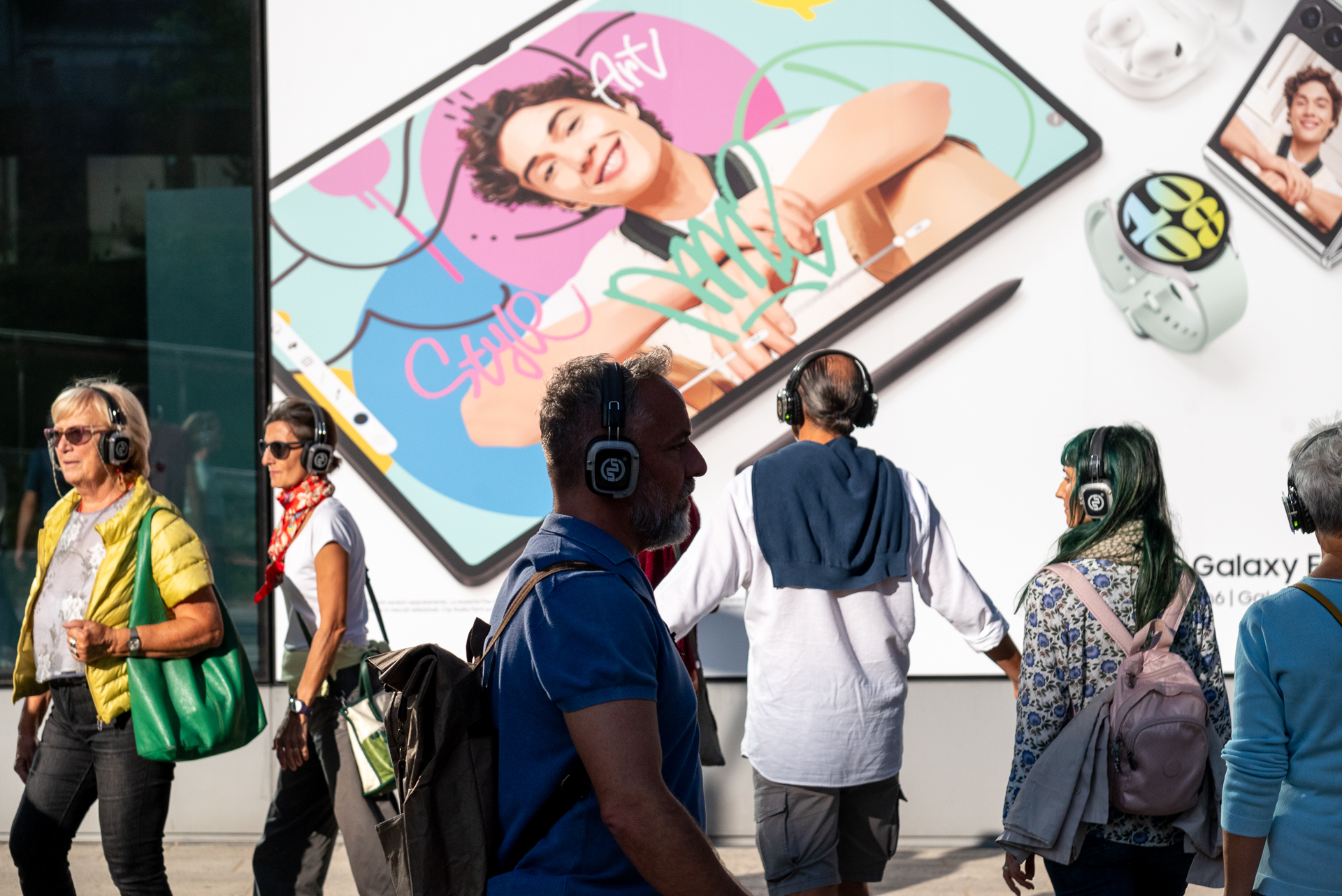
The subject of the urban performance, produced by Campsirago Residency is walking: walking in the evolution of human history and the journey interrelated with the present time and our contemporary society. This investigation started from a 20-year-old practice and a fundamental text: The History of walking by Rebecca Solnit, the main attempt to systematically reconstruct the role of walking in Western civilization and culture.
The great anthropologist André Leroi-Gourhan said that the man became a man when he freed his own hands and mouth from the constraints of the four supports. Essentially the man became a human when he learned to walk, making the upright position substantial. For Leroi-Gourhan more than rational animal, more than implacable biped, man is the quintessential walking being. “Therefore, the history of humanity begins with the feet. […]. Humanity has been walking, for six million years. In many ways we are sapiens because of our ability to move over long distances, to explore time and again our limits, to cross landscapes and then transform them, to weigh our adaptive capacities in ever new environments, to shape a brain that owes its uniqueness to plasticity and flexibility. ” Aristotle had already defined walking as what defines and distinguishes humanity. Being bipedal is not an accidental characteristic, but an essential element of man.
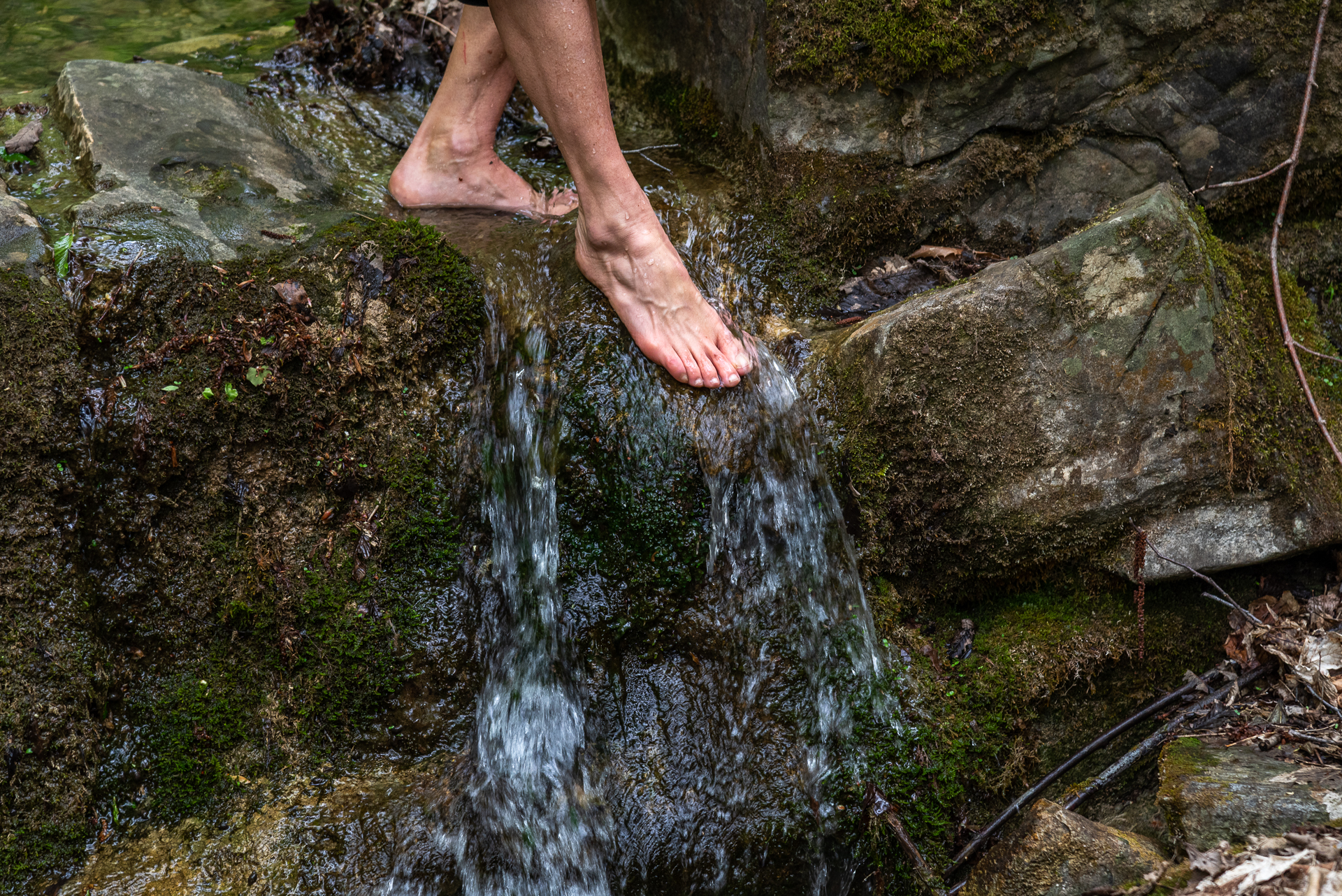
Walking resembles reading/writing. Walking is also used as a performative language used to convey specific messages in a collective political/democratic dialectic. The artistic avant-gardes of the twentieth century took to extremes the socially critical significance attributed to the activity of walking. For the Dada movement, walking through the trivial and marginal spaces of the city was equivalent to contrasting the dominant aesthetic with a playful and performative one.
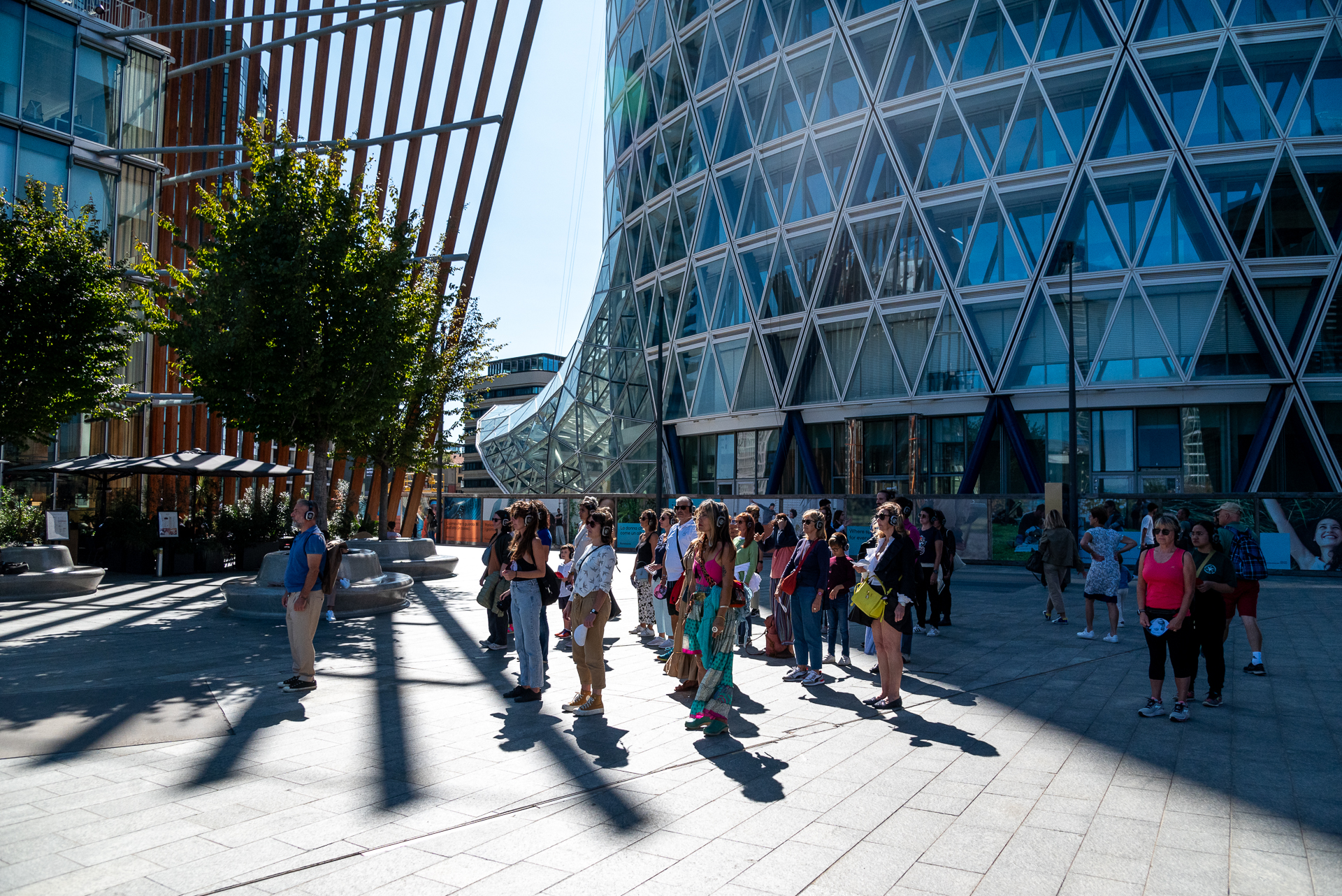
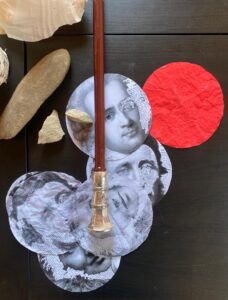 During this walking experience, we will deal with several topics: poetic wandering, the street as a place of perceived danger, the practice of pilgrimages, marches, demonstrations, and prides, reaching finally the world of meditative and realignment, reconnecting with with one bodily and spiritual self. Since the individual and collective walking is one of the ways of occupying public space, the history of walking is also inevitably a history of the relationship between space and society and therefore a history of the relationship between democracy and public space. The” walkability” of a space largely coincides with its democraticness. This is, of course, provided that the concept of walkability, is understood in a broad sense and includes the possibility of different subjects and social groups to manifest themselves and their political and cultural, sexual and religious identities. There is consequently a very strong political theme behind walkability. Walking is democracy in relation to public spaces. The greatest political and cultural shifts of course, as well as the great revolutions in history, have almost always occurred through the appropriation of squares, streets, and public spaces through marches, demonstrations, and large community walks. Pride is just one of the latest tools by which a community, in this case the Gay community first and LGBTQ+ community today, takes to the streets and marches on foot to be recognized, to show its identity existence and to fight stereotypes. Walking together, reappropriating public spaces, is democratic world-building.
During this walking experience, we will deal with several topics: poetic wandering, the street as a place of perceived danger, the practice of pilgrimages, marches, demonstrations, and prides, reaching finally the world of meditative and realignment, reconnecting with with one bodily and spiritual self. Since the individual and collective walking is one of the ways of occupying public space, the history of walking is also inevitably a history of the relationship between space and society and therefore a history of the relationship between democracy and public space. The” walkability” of a space largely coincides with its democraticness. This is, of course, provided that the concept of walkability, is understood in a broad sense and includes the possibility of different subjects and social groups to manifest themselves and their political and cultural, sexual and religious identities. There is consequently a very strong political theme behind walkability. Walking is democracy in relation to public spaces. The greatest political and cultural shifts of course, as well as the great revolutions in history, have almost always occurred through the appropriation of squares, streets, and public spaces through marches, demonstrations, and large community walks. Pride is just one of the latest tools by which a community, in this case the Gay community first and LGBTQ+ community today, takes to the streets and marches on foot to be recognized, to show its identity existence and to fight stereotypes. Walking together, reappropriating public spaces, is democratic world-building.
There will also be a tribute to the mothers of the Plaza de Mayo who, every week since April 30, 1977, walk counterclockwise around the obelisk in the square, wearing handkerchiefs and signs with the names of their missing children and the date of their disappearance, in a ritual in which forgetting is not permitted and in which memory recovers its deepest meaning. Walking.
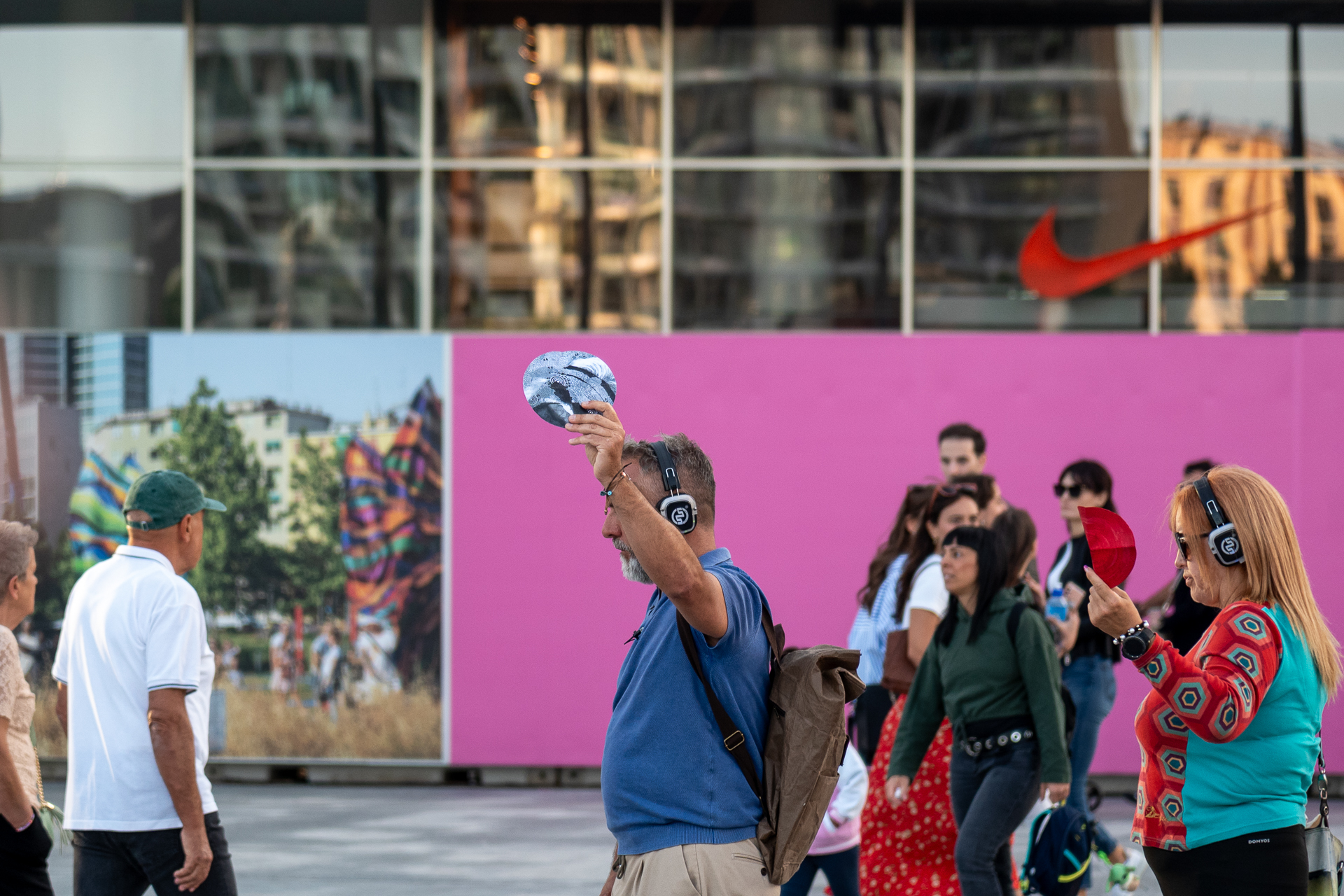
BIBLIOGRAPHY
Henry David Thoreau Civil Disobedience; Walking, or the Wild; Walden; or, Life in the Woods
Rebecca Solnit Wanderlust: A History of Walk
Bruce Chatwin The Songlines
Enzo Braschi La conoscenza segreta degli indiani d’America
Rainer Maria Rilke Von der Landschaft
Pierercole Musini Gandhi. Il seme della non violenza
J.J. Rousseau Les Rêveries du promeneur solitaire
Thic Nhat Hanh The Miracle of Mindfulness
Pauline Olvieros Deep Listening
Francesco Carreri Walkscapes camminare come pratica estetica
Walter Benjamin Berliner Kindheit um neunzehnhundert
a performance by Michele Losi | with Michele Losi | stage elements and costumes Stefania Coretti | music Luca Maria Baldini and Nori Tanaka | actoral coaching Sebastiano Sicurezza | movement Filippo Porro_Azioni Fuori Posto | texts by Michele Losi with the collaboration of Sofia Bolognini | a Campsirago Residency production | with Omnicent Hukia / D:DNA | distribution Alessandra Di Pilato | photographs Alvise Crovato | video Luana Giardino | production Valentina Brignoli

